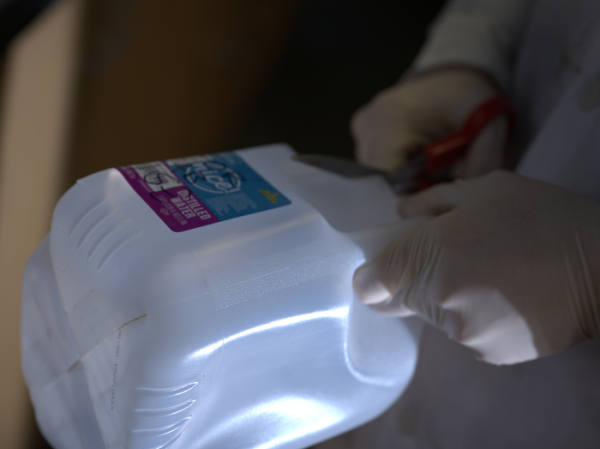Here’s another thing to do with that mountain of used plastic: make it soak up excess carbon dioxide.
What seems like a win-win for a pair of pressing environmental problems describes a Rice University lab’s newly discovered chemical technique to turn waste plastic into an effective carbon dioxide (CO2) sorbent for industry.
Rice chemist James Tour and co-lead authors Rice alumnus Wala Algozeeb, graduate student Paul Savas and postdoctoral researcher Zhe Yuan reported in the American Chemical Society journal ACS Nano that heating plastic waste in the presence of potassium acetate produced particles with nanometer-scale pores that trap carbon dioxide molecules.
These particles can be used to remove CO2 from flue gas streams, they reported.
Read more at: Rice University
A plastic jug is fodder for a material developed at Rice University that turns waste plastic into a material that absorbs carbon dioxide. The lab is targeting flue gases that now require a far more complex process to sequester carbon dioxide. (Photo Credit: Jeff Fitlow/Rice University)


